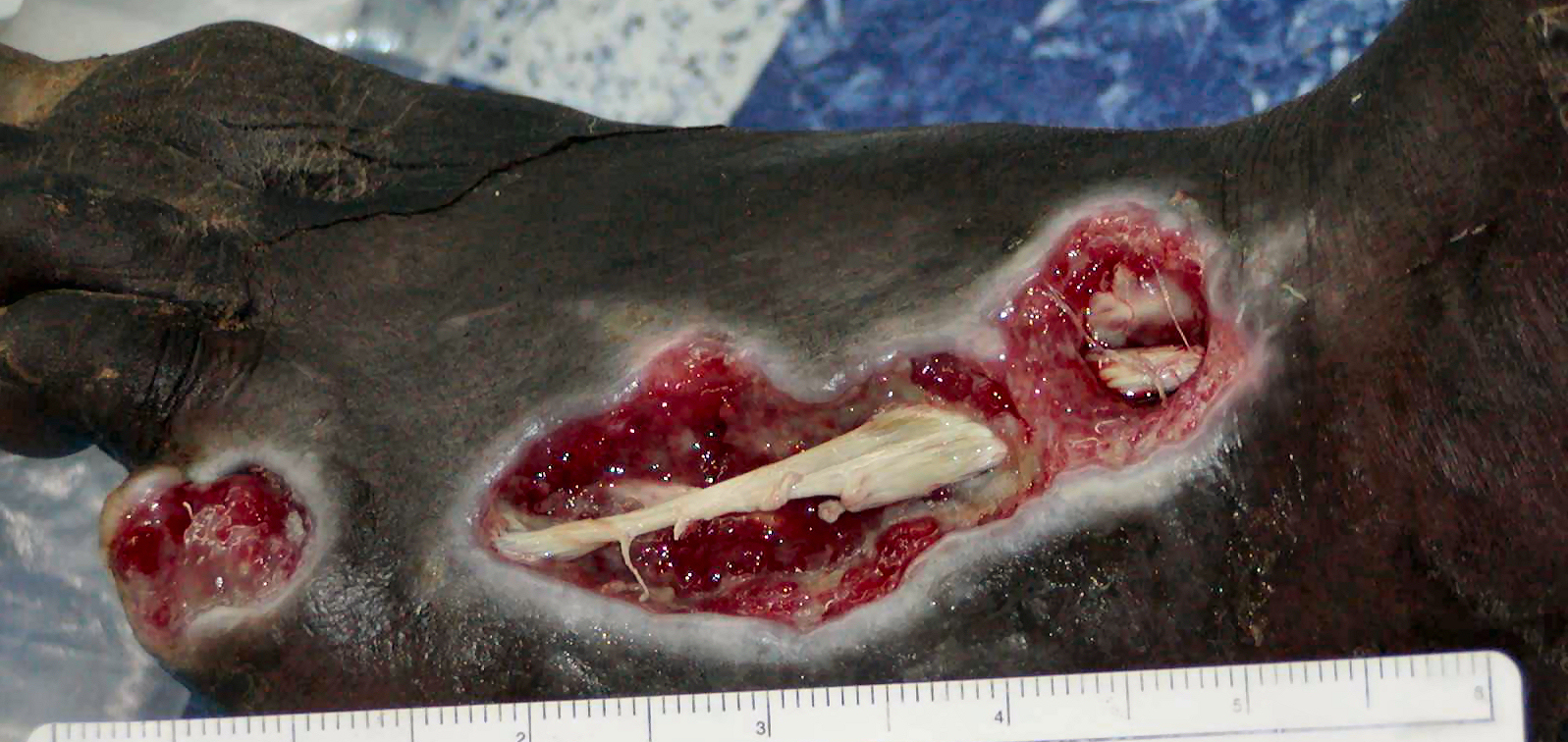Linda Benskin, RN, BSN, Ghana_SRN, Church of Christ Mission Clinic, volunteer nurse, 11304 Prairie Dog Trail, Austin, TX 78750-1322 and Peter Bombande, Ghana_SRN, Church of Christ Mission Clinic, Clinic Director, PO Box 137, Yendi, N.R., Ghana.
Middle-aged male in Ghana, West Africa, with multiple foot ulcers, including fully exposed tendons, stated cause was boils bursting only one week prior and only treatment was to wrap foot in cloth. Co-morbidities: neuropathy secondary to Hansen's disease (leprosy), significant malnutrition. Major wound (10.5cm long x 4cm wide x 2cm deep) was heavily exudating. High humidity and temperature lows in the 80°s with highs above 100°F promoted bacterial and fungal growth. Treatment included nutrition, prayer and direct wound care. Wound debridement: sharp, then sodium chloride-impregnated gauze and EUSOL. Wound margins became macerated from moist debridement procedures. This clinic has found polymeric membrane dressings provide ideal wound moisture conditions for rapid healing without periwound maceration on heavily exudating wounds, and reduce dressing change frequency. Polymeric membrane wound filler and dressings arrived on site one week into treatment, the day wounds were well debrided. Wounds lightly filled with polymeric membrane wound filler and covered with standard polymeric dressings. Tendon was cradled in polymeric wound filler to keep it appropriately moist until viable tissue reached it. Dressing change frequency was based on condition of wound. During use of sodium chloride-impregnated gauze and EUSOL, daily changes were performed. When polymeric membrane wound dressings were initiated, dressing changes were reduced to four times per week, then twice a week. Wound healed completely only 38 days after initiation of polymeric membrane wound filler and dressings. Wound did not become heavily re-infected in this severely immunocompromised patient despite “incubator conditions.” Tendon, which was exposed on all sides, was kept moist enough to remain viable – patient retained foot mobility. Polymeric membrane wound filler and dressings were an excellent dressing choice for these heavily exudating deep wounds, even in a patient with neuropathy and immuno-insufficiency. Dressings were used from initiation of treatment to complete wound closure.

See more of Case Study Poster Abstracts
See more of Case Study Abstracts
See more of The 38th Annual WOCN Society Conference (June 24 -- 28, 2006)

